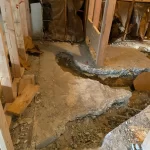When disaster strikes or families face unexpected hardships, finding a safe place to live can feel overwhelming. Whether it’s due to natural disasters, economic struggles, or other crises, displaced people often need help fast. Low-income transitional housing programs, like those supported by the LIHTC construction, provide essential temporary homes for those in need. These programs not only offer shelter but also help families rebuild, creating a path to permanent housing and long-term stability.
This blog shows how LIHTC provides transitional housing, offering families a safe space to rebuild and step into a stable, permanent future!
Understanding the Challenges Faced by Displaced Populations
Displacement is a difficult reality for many. Families who lose their homes due to hurricanes, floods, or fires face stress, confusion, and uncertainty. But it’s not just natural disasters—many people are displaced by economic challenges or conflicts, leading to ongoing struggles for affordable housing. The lack of temporary affordable housing makes it harder for these families to recover. Without a safe, stable place to stay, they can’t focus on rebuilding their lives. That’s where LIHTC transitional housing comes in, offering immediate relief and a path forward.
Key Challenges of Displacement:
- Loss of home and belongings during natural disasters.
- Unstable living conditions leading to mental and emotional strain.
- Difficulty finding affordable housing in the aftermath of crises.
LIHTC’s Role in Providing Transitional Affordable Housing
LIHTC transitional housing programs are specifically designed to help families during tough times. By offering affordable housing options, these programs provide a temporary solution while people work toward permanent homes. Developers can use tax credits to build affordable rental units for those who need them the most—especially people who have been displaced by disasters or conflict.
These homes aren’t just places to sleep; they serve as stepping stones, offering transitional affordable housing for displaced populations while they regain their footing. LIHTC disaster recovery housing might be used after a disaster or as part of a longer-term program to help people get back on their feet financially. The goal is to provide a stable place to live while people work toward permanent housing.
How LIHTC Helps:
- Affordable rental units for displaced families.
- Temporary yet stable housing to help families recover.
- Long-term goals: A stepping stone to permanent housing and self-sufficiency.
Case Studies of LIHTC Housing for Displaced Families
The following real-world case studies highlight how LIHTC has been applied to deliver low-income transitional housing and address the needs of displaced families during times of crisis.
1. Florida: Low-Income Transitional Housing After the 2004 Hurricanes
In the wake of the 2004 hurricane season, Florida urgently needed low-income transitional housing for displaced residents. Research from Clemson University found that many LIHTC transitional housing developments built during recovery were located in storm surge zones, increasing future risk. While these projects offered essential transitional affordable housing for displaced populations, they highlighted the importance of safer site selection in LIHTC disaster recovery housing planning.
Source: Clemson University Dissertation
2. Nationwide: Policy Gaps in LIHTC Disaster Recovery
A study by the Massachusetts Institute of Technology revealed that, as of 2017–2018, only 24 U.S. states and territories included disaster-related provisions in their LIHTC Qualified Allocation Plans. Just 3 states focused solely on recovery, while 8 addressed both preparedness and recovery. This lack of consistent policy means opportunities to deploy LIHTC emergency housing, temporary affordable housing, and broader housing support for displaced families are often missed.
Source: MIT Center for Real Estate White Paper
Building Long-Term Stability with LIHTC
While low-income transitional housing offers a temporary solution, LIHTC transitional housing aims to provide long-term stability. After families use these programs, many are able to move into more permanent, affordable homes. The skills and support they gain while in transitional affordable housing programs make all the difference in helping them regain their independence.
And the support doesn’t end when the family moves in. Many LIHTC disaster recovery housing projects also offer job training, financial literacy workshops, and mental health services, ensuring that people don’t just survive—they thrive. These added services create a lasting impact, helping families live on their own terms.
Support Beyond Housing:
- Job training and financial literacy programs.
- Mental health services to support emotional recovery.
- Permanent housing options after successful program completion.
LIHTC Transitional Housing for Displaced Families
Low-income transitional housing programs, especially those funded through LIHTC, are a lifeline for families in crisis. They provide shelter, stability, and support—helping families rebuild and regain their independence.
If you’re interested in learning more about how LIHTC transitional housing can assist displaced families, contact us today for more information about our LIHTC disaster recovery housing solutions.










